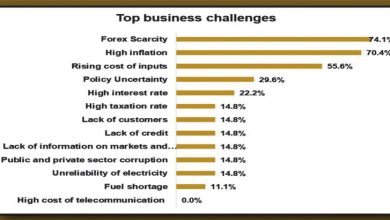Malawi faces k6.2TN DVPT financing gap
The African Development Bank (AfDB) says given the current inflows of financing, Malawi faces a gap of about $3.59 billion (about K6.2 trillion) or $0.63 billion (K1.1 trillion) annually.
This would enable the country to fast-track structural transformation for the 2030 Agenda for Sustainable Development which envisions a secure world free of poverty and hunger and the African Union’s Agenda 2063, blueprint and master plan for sustainable development and economic growth of the continent.
Data published in the 2024 AfDB Malawi Country Focus Report show that Malawi will need about $4.5 billion (about K7.9 trillion) to finance investments in education, energy, productivity, and infrastructure annually until 2030 or about $0.79 billion (K1.4 trillion) annually until 2063.

The largest financing needs are in infrastructure at 55 percent of total financing, followed by education at 30 percent.
Said AfDB in the report: “A reform of the international financial architecture is needed urgently as the existing frameworks have been unable to support the mobilisation of stable and long-term financing at scale to support investments needed to combat the climate crisis and achieve the Sustainable Development Goals [SDGs] in Malawi in particular, and in Africa in general.
“Current inflows of financing to Malawi and Africa, in general, fall far short of the requirements to fast-track structural transformation by 2030 0r 2063.”
AfDB data show that in 2022, total inflows from foreign direct investments (FDI), official development assistance (ODA), remittances, and net portfolio investments to Africa were only $174.9 billion, down 19.4 percent from $217.1 billion recorded in 2021.
Moreover, out of the $652.6 billion of global climate finance mobilised in 2019/20, Africa received only $29.5 billion or 4.5 percent, 86 percent from public sources and 14 percent from private sources.
For Malawi, these flows amounted to $926.1 million in 2021 while net portfolio investments were negative since 2019 when the debt crisis worsened, and foreign reserves dwindled to less than one month of imports cover.
Compared to the annual financing needs to fast-track structural transformation by 2030, current inflows represent 21 percent of needs, at a time unpredictability of such flows makes it difficult for the government to plan for development.
Domestically, the financial sector has not been able to play an optimal role in financial resource allocation as about 60 percent of credit is channelled to the government and only 30 percent is available for the private sector.
Of this amount, AfDB notes that 70 percent is allocated to non-productive sectors such as trading activities and on short-term basis.
Ironically, while AfDB concedes that increased access to global climate financing, reform of the international financing architecture and enhanced domestic revenue mobilisation will help in addressing financing challenges, structural challenges stands in the way for Malawi.
Among others, weaknesses in managing the fiscal deficits and tax could make closing the estimated financing gaps difficult.
“Considering the current tax-to-GDP ratios, for Malawi to close its financing gap by 2030 or 2063, the annual tax-to-GDP ratios would need to increase to 29.3 and 5.1 respectively.
“Given that the 2023/2024 level of the tax-to-GDP ratio was only 12.9, Malawi would need to more than double its tax revenue collection rate, a challenging feat indeed.
“An efficient and disciplined public service, free from corruption, will enhance resource mobilisation and allocations in support of more productive and transformational investments.”
In an interview yesterday, Scotland-based economist Velli Nyasulu observed that in the absence of the necessary financing, Malawi’s economy will face significant setbacks in achieving the structural transformation needed to end poverty and inequality.
He said: “Given Malawi’s current economic structure and challenges, it would appear difficult for the country to fully bridge the financing gap through domestic means alone.
“A multi-faceted approach combining domestic resource mobilization, improved tax administration, foreign aid, concessional loans, and private sector engagement is necessary to address the financing needs effectively, but this would require strong political will, sound economic policies, and effective governance to ensure that resources are used efficiently and effectively for the intended structural transformation.”
Earlier, the International Monetary Fund (IMF) cautioned that financing debt and imports will remain a challenge for Malawi despite improvements in filling the gap unless the country’s unsustainable debt is addressed.
IMF first deputy managing director Gita Gopinath observed then that debt relief was, however, key to attaining greater financing gaps, which could then only be closed at an undesirably high cost to the population.
Malawi is going through debt restructuring negotiations under the G20 Common Framework, as part of the efforts to bring its debt to sustainable levels.
Published data show that between 2023 and 2029, Malawi will have paid 67 percent of external sovereign debt service to Multilateral Development Banks (MDBs), according to an analysis by the Debt Relief for Green and Inclusive Recovery Project analysis.
As at December 2023, of Malawi’s total external public debt of K6.62 trillion, K4.4 trillion is owed to multilateral creditors. The World Bank is the country’s largest creditor with K2.2 trillion or 33 percent of Malawi’s total external public debt.
This means that only about one third of Malawi’s external public debt stock is under negotiation, with K1.7 trillion owed to commercial creditors mostly to African Export-Import Bank (Afreximbank) and Trade and Development Bank and K742 billion owed to bilateral creditors mostly China and Saudi Arabia.
Treasury Secretary Betchani Tchereni was yet to respond to our questionnaire.
However, earlier, he said Malawi is making big progress on her debt restructuring.





